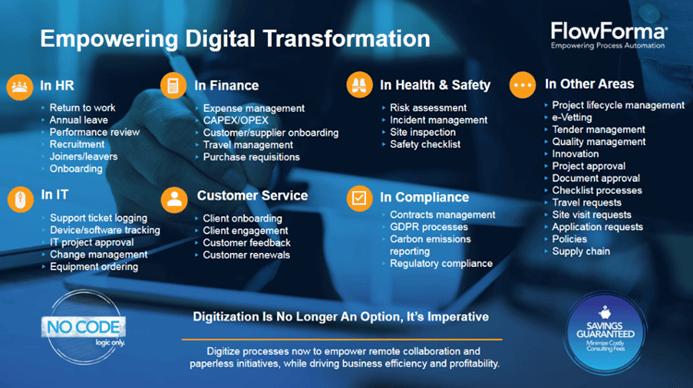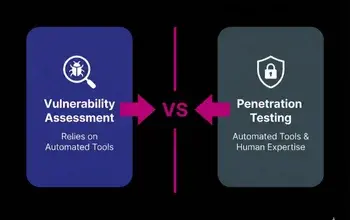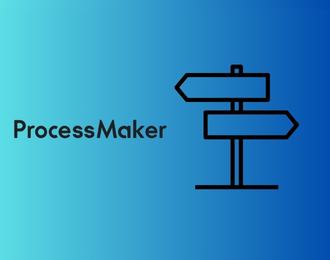As I have participated in multiple online panel discussions, attended industry events across the globe, and listened to our customer base this year one thing is still noticeably clear - there is an appetite for embracing digitalization among forward-thinking organizations.
Some industries are in full swing while others lag and are nervous about dipping their toe in the water for several reasons.
What is encouraging is that many have a designated person or senior member of the organization who is tasked with delivering enterprise-wide process automation, while others have individuals who have a specific need, are curious and perceptive at a departmental level, or can’t help but research ways of doing things differently to gain operational efficiencies within their individual section of the business.
A common theme is also prevailing. The companies that are succeeding and accelerating with pace are those where digitalization is mandated by the C-Suite/senior management.
The top-down approach guarantees that implementation of the right solution generally happens quickly, and the onus is on senior management’s direct reports to find and implement the desired digital process automation technology swiftly to reap benefits such as cost savings, competitive advantage, innovation, and enhanced customer experience as early as possible.
Interestingly, Gartner’s recent annual Senior Business Executive Survey revealed that CEOs and CFOs are prioritizing growth, technology, and talent as key elements of their business strategy with 30+% of CEOs and CFOs prioritizing technology-related initiatives and 14-16% prioritizing cost management which in my experience often go hand-in-hand.
A sound technology solution can significantly help to reduce costs through the operational efficiencies gained across an organization.
A Digital Process Automation Strategy is Not Just the CIO's Responsibility, it is Everyone’s
What has become more apparent, as organizations are faced with increased competitive and compliance pressures, is the appetite for more automation of processes by the entire C-Suite and not just the CIO (Chief Information Officer).
We are now getting inquiries from and talking to an expanded list of C-Suite/Director titles. CFOs/Finance Directors are curious about how employees’ time is spent, to ensure employee productivity is maximized and identify where further efficiencies can be made. Revenue interruption is a common phrase we hear when companies need to understand where they are losing money and how to quickly rectify that.
The birds-eye view of how each process within an organization is performing is highly sought after and the desire to be lean to compete is becoming a strategic priority in small-medium sized enterprises as well as the large 1,000+ employee companies.
“It would have taken two to three months with the old system and cost between $3-5,000. The difference with FlowForma Process Automation is like night and day; it’s saved us tons of time all the way around, from admin processing to the reporting side of things.”
Karl Kowalczyk, Executive Director/Registrar
College of Paramedics of Nova Scotia

For CIOs, luckily, it is everyone’s responsibility to operate more efficiently and effectively and each function or department within an organization is charged with identifying how to do things smarter to save time, boost productivity, and enhance morale.
Attracting the right people for roles across all industries is a current challenge. Organizations are finding it difficult to fill positions and skills gaps and realize that having the right digital process automation tool in place is helping to bridge that gap.
As it is no longer just the CIO/IT department’s job to find the right solution other functional heads are often looking for point solutions that solve a specific challenge like for example employee onboarding within an HR department, access provisioning within a hospital/healthcare environment, or to ensure compliance with new legislation in the construction sector.
The beauty of a company onboarding a digital process automation tool as a point solution as opposed to an end-to-end organizational solution is that one department/team sees the benefits, word spreads, and there is that ‘aha moment’ and other areas of the business visualize justified use cases to use the tool for other simple/complex processes elsewhere, and so this ‘point solution’ grows legs and we’re seeing interest from multiple other divisions within an organization and the company quickly starts to enjoy economies of scale.
“As with any new software, there’s a mindset change for people, but it helps that they can see tangible benefits straight away. The more processes I’ve automated, the more the business sees the benefits and the more they want to use it.
FlowForma Process Automation is completely different to other SharePoint apps; much more business-intuitive. I designed a five-step Mobile Request form and completed it in a day.”
William McCann, IT Manager Grant Thornton
Typical Organizational Process Automation Use Cases
During the early discovery calls with many clients, we find there is always an educational piece in the overall conversation. An Accounts specialist may indicate that they need a solution to quickly rectify bottlenecks in their invoice processing procedures. We will highlight and demo how that is possible and the capabilities of the FlowForma Process Automation tool.
Before long we’re sharing how they will not only be able to streamline invoice processing and have that high-level view of where ‘something is stuck’ but that the HR department can simultaneously create another process (often in less than an hour) to onboard new employees with a set of mandatory steps that need to be followed to ensure that a new start, and the business, have everything they need to start working as soon as possible. The use cases really are endless across any industry sector.

How CIOs Rate Their Maturity Levels
While it is clear that CIOs are not solely responsible for digital transformation in organizations, it is not surprising that they will ponder over what value they bring to the business currently and have longer-term aspirations.
It is interesting to note that in Info-Tech’s CIO Priorities Report a survey on the current and future state of IT maturity revealed that more than 50% of IT professionals who participated rated themselves at the ‘Support’ level providing reliable infrastructure, supporting a responsive IT service desk that reasonably satisfies stakeholders.
On the flip side of that, they indicate that longer-term they aspire to reach the ‘Transform’ level of maturity where they hope to deliver reliable innovation and lead the organization to become a technology-driven firm.
We are hearing that recruiting the talent required to meet the backlog of digital demands within an organization is a real challenge and slowing the rate at which organizations can scale.
The long-term vision for IT professionals is to achieve efficiencies and cost savings and one route to achieving this is to empower employees with a no code process automation solution (governed by IT) to create their desired automated process flows to accelerate productivity in whatever area they work to increase efficiency and decrease costs.
Why the C-Suite Needs a Digital Process Automation Strategy
Since the COVID-19 pandemic, there has been a surge in C-level desire to improve operational efficiency and become more resilient. A McKinsey survey found that responses to COVID-19 have speeded the adoption of digital technologies by several years.
There is a pattern that many organizations have some solutions /tools in place to help automate processes, but we frequently hear that existing systems can be rigid, are difficult to edit, and there is little support readily available. This and the fact that some solutions require skilled personnel, with coding experience, to maintain/optimize can be problematic when the right role with the desired skillset is simply not available.
Overall, the appetite for the right process automation tool by C-level executives is driven by
- The need for increased productivity
- To reduce costs
- To ensure consistent quality
- To scale and be competitive
- The need for better data and reporting for enhanced decision-making
- Regulatory requirements
Middle management professionals, who know they need a process automation solution, should no longer be hitting a brick wall when trying to get budget approval for a tool that will make life a lot easier, make them (and their department) more productive, and longer-term make significant financial savings for the company. The C-Suite is aware of the benefits, and we are seeing that more and more senior titles are demanding process automation to remain competitive and resilient.
“We have transparency and visibility that we didn’t have before, and a consistency in the data that makes it much easier to generate reports. It encourages everyone to act far more professionally than when we depended on paper. You can’t submit half-filled boxes because the system won’t let you. Even little things, like the better understanding it gives people of their own cost center, help improve the professionalism of the organization.”
I recommend the FlowForma Process Automation tool to other colleges as it can save them money, improve their efficiency, and give them the real-time visibility they need.”
Mark Lay, Finance Director
Abingdon & Witney College
How FlowForma Process Automation Helps C-Level Leaders
We know that this group of senior-level leaders is under pressure to ensure overall operational efficiency, comply with legislation, and stay ahead of the curve.
“I’m a direct user and find the whole FlowForma Process Automation environment really awesome. It’s very easy to use and we haven’t had many service desk requests back from our administration team. Before, we’d get three or four support calls a month because there was a problem with a SharePoint workflow. That’s now gone.”
Ian Blackburn, Chief Information Officer
Tui Ora
The good news is that digital process automation is easy with the right tool. Most of our customers are up and running in a couple of weeks.
FlowForma Process Automation is an acorn application. A simple step in business transformation grows into something much bigger, changing the culture of a company and encouraging innovation.
Our no code digital process automation software empowers employees to take control of the way they work, collaborate more effectively, eradicate silos that slow them down, and accelerate digital transformation.
Let us know where your gaps are, the process challenges you are facing, and how we can help. Some organizations have point solutions, and some have invested in other systems and tools, that is okay, we are used to this, and our tool can integrate with (and in some cases complement) other tech investments. Where it makes sense, we strive to ensure that you are optimizing what you already have in your tech stack rather than displacing it.
Schedule a call with one of our process experts today who will be happy to have a conversation that will help identify your key gaps and the process that will benefit most from automation, and enable you to scale fast.
.png) By
By 



